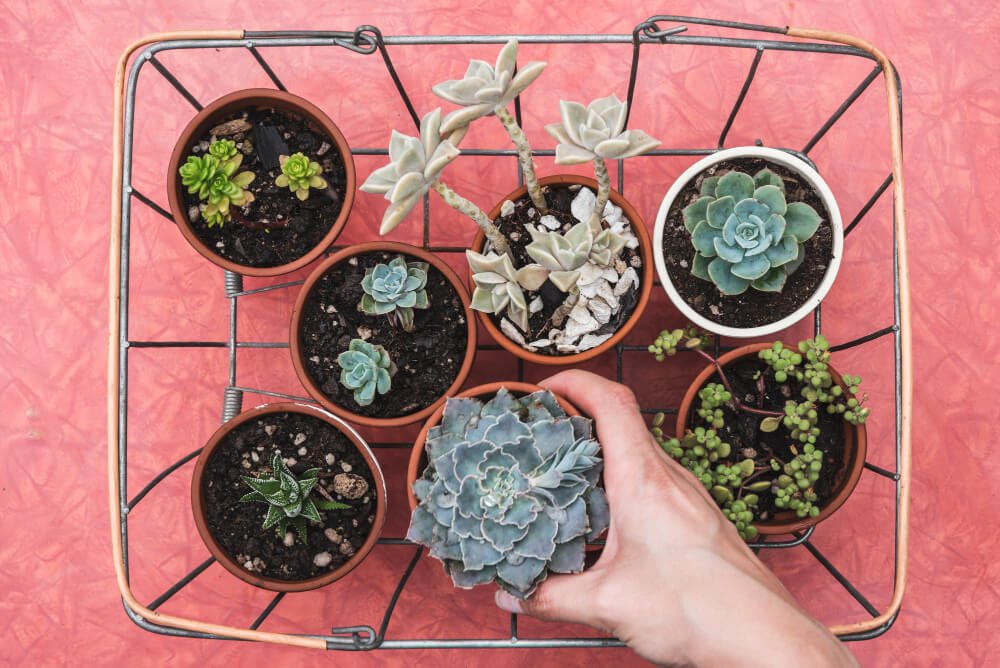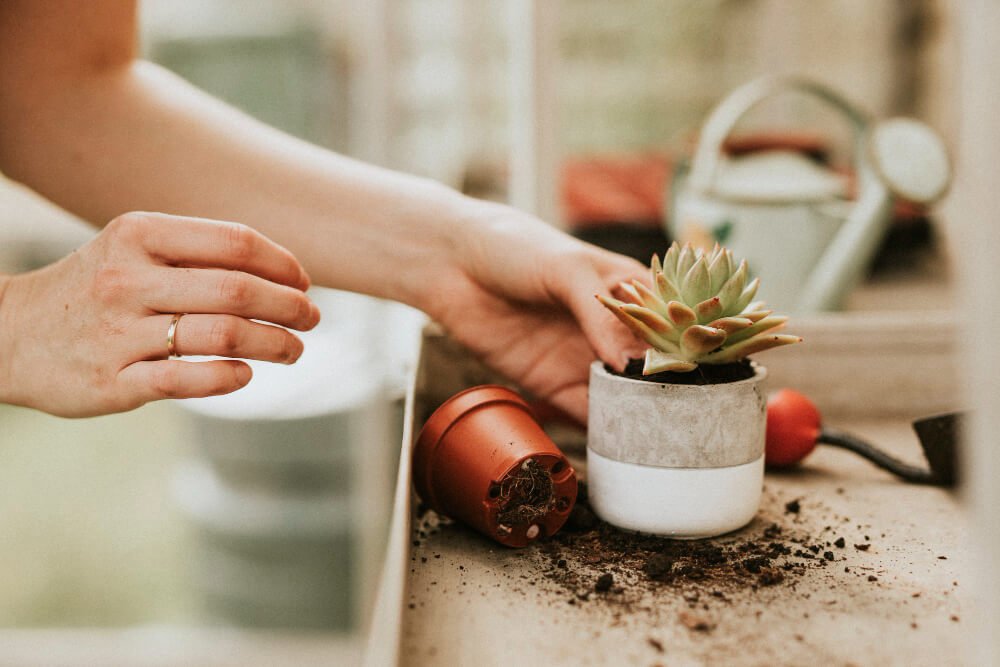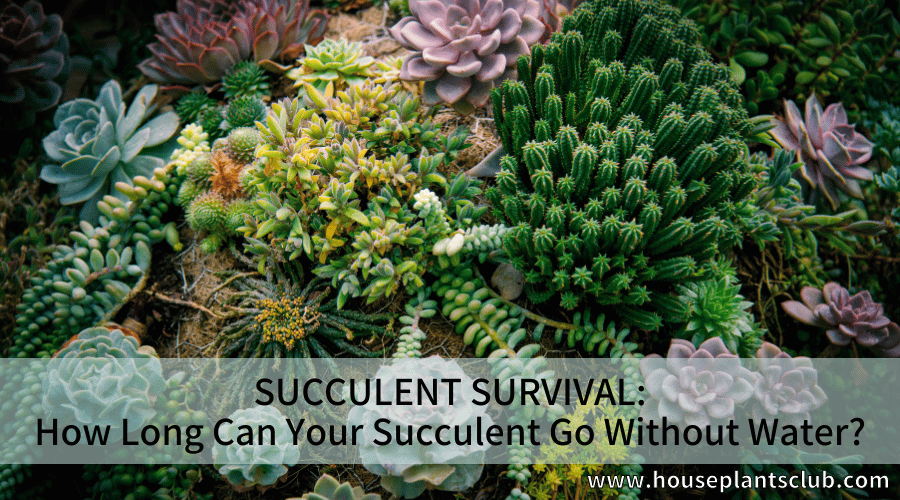Succulents are some of the most popular outdoor gardening and indoor plants, and it’s easy to see why. These hardy plants can liven up any space with their vibrant colors and unique shapes. But what happens when life gets busy and you forget to water your succulent for a few days? Or what if you’re going on vacation and won’t be able to tend to your plants for a while? The question arises: how long can your succulent plants go without water? As a copywriter and digital marketer specializing in gardening and plant care, I’ve researched and tested the limits of succulent survival. In this article, I’ll share with you the factors that affect how long your succulent can go without water, as well as some tips for keeping your plants healthy and happy even when you’re not able to water them as often as you’d like. So, sit back, relax, and dive into the world of succulent survival!
How long can succulents go without water?
Succulents are native to arid regions, meaning that most types of succulents can go without water for long periods. Some succulents can survive for months without water. However, the length of time succulent plants can go without water depends on different factors, including the succulent species, the plant’s size, the growing conditions, and the time of year.

Factors that affect how long a succulent can go without water
Succulents are adapted to survive in arid conditions and can tolerate drought better than most plants. The exact duration that succulents can go without water depends on various factors such as the type of succulent, environmental conditions, and the plant’s health. Here are some general guidelines:
- Established and healthy succulents: Healthy, mature succulents with well-established root systems can typically survive without water for several weeks, and sometimes even months. They have developed water storage mechanisms in their leaves, stems, or roots to sustain themselves during dry periods.
- Seasonal factors: Succulents tend to have different water requirements based on the seasons. During their active growth phase, typically in spring and summer, succulents may need more frequent watering. In contrast, they generally require less water during their dormant period, usually in winter, when growth slows.
- Environmental conditions: Factors such as temperature, humidity, and sunlight intensity can influence how long succulents can go without water. In hot and dry climates, succulents may need watering more frequently, while in cooler and more humid conditions, they can go longer without water.
- Size and type of succulent: The size and type of succulent also play a role in determining how long they can go without water. Smaller succulents with less water storage capacity may require more frequent watering than larger, more robust succulents.
- Soil and pot conditions: Well-draining soil and pots with drainage holes are essential for succulent health. Proper drainage allows excess water to flow, preventing waterlogging and root rot. Succulents in well-draining soil can better endure periods without water.
How succulents store water
One of the reasons succulents can survive for long periods without water is that they store water in their leaves and stems. Succulents have thick, fleshy leaves holding water for weeks or months. Some succulents, like cacti, have specialized water-storing tissues in their stems.
When a succulent is watered, it absorbs water through its roots and stores it in its leaves and stems. As the plant uses the stored water, it shrinks and wrinkles. This is a sign that the plant needs water.
Signs that your succulent needs water
So, how do you know when your succulent needs water? The most obvious sign is when the leaves start to shrink and wrinkle. However, there are other signs to look out for, such as:
- The easiest way to that your succulent plant is lack of water Is when the soil feels dry to the touch
- The succulent leaves start to look dull or flat
- The plant begins to wilt or droop
- The tips of the succulent leaves start to turn brown
If you notice these signs, it’s time to water your succulent plants.
How to properly water your succulents

Proper watering is essential for the health of both indoor and outdoor succulents. Here are some guidelines to help you water your succulents correctly:
Watering Indoor Succulents:
- Check the soil moisture: Before watering, check the soil’s moisture level. Stick your finger about an inch into the soil to determine if it is dry. If the soil feels damp, hold off on watering until it dries out.
- Water thoroughly: When watering, give your indoor succulents a good soak. Water the soil around the base of the plant until water drains out from the bottom of the pot. This ensures the water reaches the roots and helps flush out accumulated salts.
- Allow proper drainage: Succulents dislike sitting in waterlogged soil, so having well-draining pots with drainage holes is crucial. After watering, ensure that excess water drains away freely. Empty the saucer or tray beneath the pot to prevent the plant from sitting in standing water.
- Frequency of watering: The watering frequency for indoor succulents depends on factors such as the type of succulent, pot size, humidity, and environmental conditions. As a general rule, it’s better to be underwater than overwater. Wait until the soil is dry before watering again, usually every 1-2 weeks. Adjust the frequency based on the needs of your specific succulent.
Watering Outdoor Succulents:
- Consider the climate: Outdoor succulents are exposed to natural rainfall, so their watering needs differ from indoor plants. Take into account the climate and local weather conditions in your area. Succulents in arid regions may require more frequent watering than those in more humid climates.
- Water deeply and infrequently: Provide a thorough soak to penetrate the root zone when watering outdoor succulents. Water the soil around the plants, avoiding wetting the leaves. Allow the soil to dry out before watering again. Depending on the climate, outdoor succulents may require watering every 1-2 weeks or less frequently.
- Adjust based on seasons: During the active growing season, typically in the warmer months (spring and summer), succulents may require more water. Reduce watering during the dormant period, usually in winter, when succulents experience slower growth. Adjust your watering schedule accordingly to prevent overwatering during cooler months.
- Watch for signs of underwatering or overwatering: Observe your outdoor succulents for signs of watering needs. Wilting, shriveled leaves or leaves losing their plumpness may indicate underwatering. On the other hand, mushy, discolored leaves or rot can indicate overwatering. Adjust your watering routine based on the condition of the plants.
Common mistakes in watering succulents
Watering succulents can be a bit tricky, and there are some common mistakes that people make. Here are a few mistakes to avoid when watering succulents:
- Overwatering: One of the most common mistakes is overwatering succulents. Succulents have adapted to survive in arid conditions, and their roots are prone to rot if they sit in excessively moist soil. It’s essential to allow the soil to dry out between waterings and avoid keeping the plant constantly wet.
- Watering on a schedule: Instead of watering on a fixed schedule, watering succulents is better based on individual needs. Factors such as the succulent type, the pot’s size, the prevailing weather conditions, and the time of year can affect the watering frequency. If you have a moisture meter, Always check the soil’s moisture level before watering it. (It is highly recommended to buy a moisture meter like this one
 )
) - Watering too deeply: When watering succulents, it’s best to water them at the base of the plant and avoid getting the leaves excessively wet. Watering from the top can lead to rot or fungal issues, especially if water accumulates in the leaf rosettes or the plant’s crown.
- Using the wrong type of water: Tap water high in minerals or chlorinated can harm succulents. It’s better to use filtered or distilled water or let tap water sit out for 24 hours to allow the chlorine to dissipate. Additionally, avoid using softened water, as it contains salts that can be detrimental to succulents.
- Not providing adequate drainage: Succulents need well-draining soil and pots with drainage holes to prevent water from pooling at the roots. If the soil retains too much moisture, the roots can rot. Ensure that the excess water can flow out freely.
- Neglecting the seasonal changes: Succulents have different water requirements during different seasons. They generally need less water during the dormant long periods of time (winter months) and more during their active growth phase (spring and summer). Adjust your watering schedule accordingly.
- Ignoring the signs of underwatering or overwatering: Pay attention to the signs your succulent is showing. Wilting, shriveled leaves may indicate underwatering, while mushy, discolored leaves may indicate overwatering. Adjust your watering routine based on the condition of the plant.
Remember, it’s always better to underwater than overwater succulents. They are adapted to survive in harsh conditions, and the soil should be slightly drier than consistently wet. Observation and adjusting watering habits based on the specific needs of your succulents will help ensure their health and longevity.
How to revive an overwatered succulent
If you’ve overwatered your succulent, don’t panic. There are several steps you can take to revive it:
- Remove the plant from the soil and let it dry for a few days.
- Cut away any rotted or damaged roots.
- Repot the plant in fresh, well-draining soil.
- Water the plant sparingly until it shows signs of recovery.

Best practices for succulent care
In addition to proper watering, there are a few other things you can do to keep your succulent healthy and happy:
- Provide ample sunlight: Succulents thrive in bright light conditions. Place them in a location that receives at least 4-6 hours of indirect or direct sunlight daily. If you’re growing succulents indoors, place them near a south-facing window or provide supplemental grow lights.
- Use well-draining soil: Succulents require soil that drains well to prevent waterlogged conditions. Use a well-draining succulent or cactus potting mix. To improve drainage, you can also create your own mix by combining regular potting soil with coarse sand or perlite.
- Water sparingly but thoroughly: Succulents have adapted to survive in arid environments, so it’s important not to overwater them. Allow the soil to dry out completely between waterings, and then water the plant thoroughly until water drains out of the bottom of the pot. Avoid keeping the soil constantly wet.
- Adjust watering with the seasons: Succulents generally need more frequent watering during the active growing season (spring and summer). In contrast, reduce watering during the dormant (winter) when growth slows. Adjust your watering schedule accordingly to prevent overwatering during cooler months.
- Avoid water on leaves: When watering succulents, it’s best to water them at the base of the plant and avoid getting water on the succulent leaves. Watering from above can lead to rot or fungal issues, especially if water accumulates in the leaf rosettes or the plant’s crown.
- Allow for proper airflow: Succulents prefer good air circulation to prevent excess moisture buildup around the leaves and stem. Avoid overcrowding plants and ensure they have adequate space for air to circulate them.
- Provide occasional fertilizer: While succulents can generally survive in nutrient-poor conditions, you can provide them with a diluted, balanced fertilizer formulated for succulents during the active growing season. Follow the package instructions and avoid over-fertilization, as it can cause harm.
- Monitor for pests and diseases: Look for common pests like mealybugs, aphids, and scale insects. Check your succulents regularly for signs of pests or conditions, such as unusual spots, discoloration, or wilting. If you notice any issues, take appropriate measures to address them promptly.
- Handle with care: Succulents have delicate leaves that can be easily damaged. Avoid excessively handling or touching the leaves, which can cause scarring or breakage. When necessary, use gentle techniques for handling and transplanting.
- Observe and learn: Each succulent species may have slightly different care requirements. Observe your plants closely, learn about their specific needs and how they respond to other conditions, and adjust your care routine accordingly.
- By following these best practices, you can provide optimal care for your succulents and enjoy their beauty and resilience for years.
Frequently asked questions about succulent plants care.
Yes, many succulents can survive indoors with enough sunlight and proper watering.
Succulents should be repotted every 2-3 years to provide fresh soil and room to grow.
Yes, many succulents can be propagated by taking cuttings or rooting leaves.
If your succulent outgrows its pot, you can repot it in a bigger pot or divide it into smaller plants.
Conclusion
Succulents are some of the easiest plants to care for, but they still need water to survive. The length of time a succulent can go without water depends on several factors, including the succulent species, the size of the plant, and the growing conditions. Signs that your succulent needs water include wilting, shriveling leaves, and dry soil. Proper watering and care are essential for your succulent’s survival, so follow the best practices outlined in this article. With some care and attention, your succulent will thrive for years.

Recent Posts
Unlocking the secret to expanding your begonia maculata family is like discovering a treasure trove of green goodness. If you've ever marveled at the stunning beauty of angel wing begonia leaves and...
If you've ever found yourself marveling at the surreal beauty of air plant blooms, you're in for a treat! These enchanting bursts of color amidst a sea of lush green foliage are like nature's way of...

